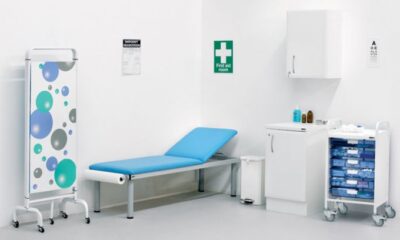Technology
HOW DRONES ARE DELIVERING MEDICAL SUPPLIES AND SAVING LIVES IN AFRICA
- Infant mortality rate Botswana is double the average of other upper-middle-income countries
- Deaths like these are caused by a lack of essential and emergency maternal healthcare support in remote, hard-to-access communities
- LightWare Lidar’s SF20/C LiDAR sensor used by the Drones for Health to ensure safe and accurate drone flights to deliver crucial medical supplies and save lives
A collaborative project in Botswana is getting essential and emergency healthcare products to remote communities quicker than ever before.
Of every 100 000 babies born in Botswana in 2019, 166 died. That’s double the average maternal mortality rate of other upper-middle-income countries. Deaths like these all over the world are the result of a lack of essential and emergency maternal healthcare supplies, blood products, and laboratory specimens not being delivered in a timely manner to and from remote, hard-to-access communities.
Botswana’s challenges stem from its geography and sparsely distributed population but consider that it is a relatively wealthy and stable African nation – something that can’t be said for every country on the continent. The 74A 2018 study on healthcare in lower- and middle-income countries published in The Lancet found that, in 2016 alone, 5 million excess deaths were attributable to poor-quality healthcare, while 3.6 million resulted from a lack of access to healthcare.
The problem of healthcare access is one that governments and NGOs the world over have been trying to solve for decades. In many places, delivery by car is too slow, by helicopter too expensive. Now, in Botswana, a potential solution is being tested.

Image – Community of Mogapi building their drone port
Drones for Health
The Drones for Health project is a collaboration between the country’s Ministry of Health and Wellness, the Botswana International University of Science and Technology (BIUST), the United Nations Population Fund, and Dutch drone company Avy. Launched in May of this year at the BIUST campus in Palapye, the pilot project aims to demonstrate how drones can expedite the delivery of essential and emergency medical supplies to far-flung communities.
Initially operating between the towns of Lecheng, Mokgware, Moremi, and Mogapi in eastern Botswana, the project will run for a number of years before the decision on countrywide deployment is made. The results are already promising, with delivery times reduced by up to 65% in some instances, compared with traditional access.
It’s a field in which Avy has considerable experience. Driven by an ethos of using drones for good, the company offers a fully integrated drone service to the medical and emergency services industries. In partnership with the Dutch Medical Drone Service, Avy has been testing pick-up and transport of medical supplies in the Netherlands for some time. Its flagship drone, the fixed-wing Avy Aera, has a wingspan of 2.4m, can cover 60km at 74km/h, and can carry payloads of up to 1.5kg.

Image – Avy pilot teaching Lecheng nurse how to place the medical payload into Avy Aera drone
“The need to invest in innovative options to bridge the long distances, reduce current transportation costs, overcome road infrastructure challenges, and improve timely availability of essential emergency obstetric care drugs, commodities and supplies is urgent,” says Dr. Edwin Gorataone Dikoloti, Botswana’s Minister of Health and Wellness.
Smart safety
For a drone designed to transport precious payloads quickly and safely, Avy chose to fit the Aera with the LightWare SF20/C LiDAR sensor. LiDAR is an acronym for “light detection and ranging”, and works by pulsing lasers at landscapes and objects, then measuring the time it takes for the light to bounce back to gauge their distance from the scanner. In drone applications, this technology enables precision take-off and landing, altimetry, and height-above-ground monitoring. Crucially, the SF20/C can provide these functions without impacting the drone’s battery, thus allowing for maximum flight time.

Video – Avy x Lightware LiDAR for Drones for Good
LiDAR helps save lives
Functions like these will be essential for another project Avy is launching in conjunction with the Dutch Fire Brigade this September. Equipped with a NightHawk payload including RGB and thermal-imaging cameras, onboard AI, and LiDAR for safe and accurate flying, Aera drones will be used to detect and report wildfires before they get out of control. It’s a project with obvious applications on the continent, and another example of how innovative thinking paired with innovative technology can save lives – in Africa and around the world.
Final takeout
The Drones for Health pilot project proves that the Avy Aera drone fitted with LightWare LiDAR SF20/C delivers critical medical supplies 65%+ faster than cars and saves lives.
Transport time by car vs drone from Botswana International University of Science and Technology to :
- Lecheng clinic – 35mins vs. 12mins → 66% faster
- Mogkware clinic – 80mins vs. 26 mins → 68% faster
- Moremi – 78mins vs. 27 mins → 65% faster













